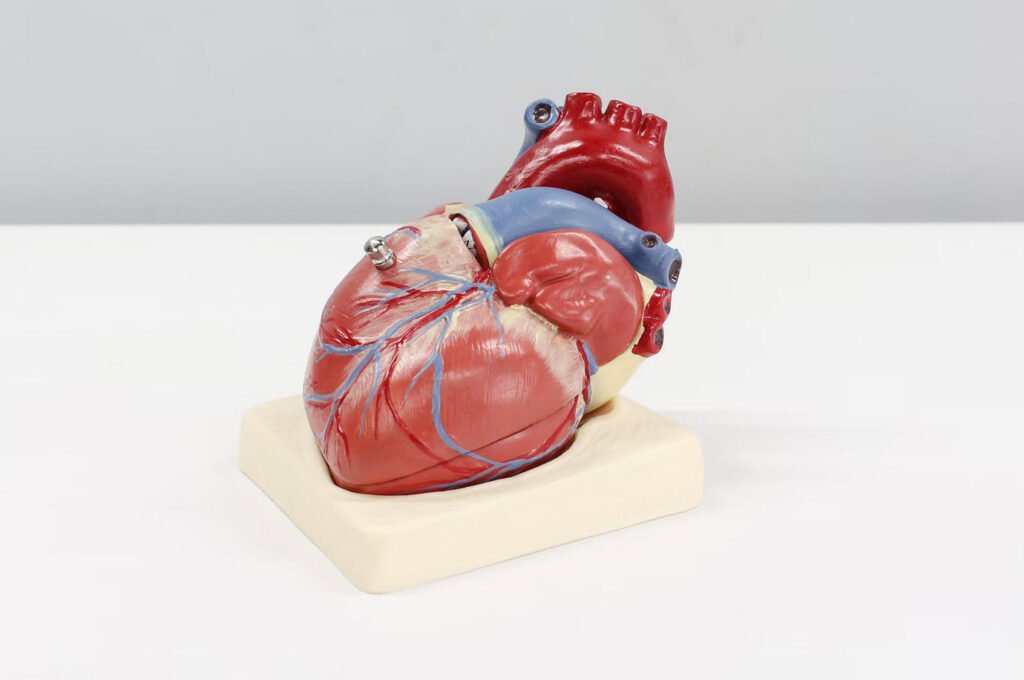
If you’re like many people, you may think of heart disease as a problem that happens to other folks. “I feel fine,” you may think, “so I have nothing to worry about.” If you’re a woman, you may also believe that being female protects you from heart disease.
If you’re a man, you may think you’re not old enough to have a serious heart condition. Wrong on all counts. In the United States, heart disease is the #1 killer of both women and men. It affects many people at midlife, as well as in old age. It also can happen to those who “feel fine.”
Consider these facts:
- Each year, 500,000 Americans die of heart disease, and approximately half of them are women.
- As early as age 45, a man’s risk of heart disease begins to rise significantly. For a woman, risk starts to increase at age 55.
- Fifty percent of men and 64 percent of women who die suddenly of heart disease have no previous symptoms of the disease.
These facts may seem frightening, but they need not be. The good news is that you have a lot of power to protect and improve your heart health. This article will help you find out your own risk
of heart disease and take steps to prevent it. “But,” you may still be thinking, “I take pretty good care of myself. I’m unlikely to get heart disease.”
Yet a recent national survey shows that only 3 percent of U.S. adults practice all of the “Big Four” habits that help to prevent heart disease: eating a healthy diet, getting regular physical activity, maintaining a healthy weight, and avoiding smoking. Many young people are also vulnerable. A recent study showed that about two-thirds of teenagers already have at least one risk factor for heart disease.
Also Read: Top 10 Questions To Ask Your Doctor Related To Your Heart Health
Every risk factor counts. Research shows that each individual risk factor greatly increases the chances of developing heart disease. Moreover, the worse a particular risk factor is, the more likely you are to develop heart disease.
For example, if you have high blood pressure, the higher it is, the greater your chances of developing heart disease, including its many serious consequences. A damaged heart can damage your life by interfering with enjoyable activities, preventing you from holding a job, and even keeping you from doing simple things, such as taking a walk or climbing steps.
What can you do to reduce your personal risk of heart disease? First, you can learn about your own risk factors. Second, you can begin to make healthful changes in your diet, physical activity, and other daily habits. Whatever your age or current state of health, it’s never too late to take steps to protect your heart. It’s also never too early. The sooner you act, the better. So use this guidebook to find out more about the state of your heart, and to learn about heart healthy living. Talk with your doctor to get more information.
Start taking action to improve your heart health today.
What You Need To Know About Heart Disease
Coronary heart disease – often simply called heart disease – occurs when the arteries that supply blood to the heart muscle become hardened and narrowed due to a buildup of plaque on the arteries’ inner walls. Plaque is the accumulation of fat, cholesterol, and other substances. As plaque continues to build up in the arteries, blood flow to the heart is reduced.
Heart disease can lead to a heart attack. A heart attack happens when an artery becomes totally blocked with plaque, preventing vital oxygen and nutrients from getting to the heart. A heart attack can cause permanent damage to the heart muscle. Heart disease is one of several cardiovascular diseases, which are disorders of the heart and blood vessel system. Other cardiovascular diseases include stroke, high blood pressure, and rheumatic heart disease.
Some people aren’t too concerned about heart disease because they think it can be “cured” with surgery. This is a myth. Heart disease is a lifelong condition: Once you get it, you’ll always have it. It’s true that procedures such as angioplasty and bypass surgery can help blood and oxygen flow more easily to the heart. But the arteries remain damaged, which means you are still more likely to have a heart attack.
Suggested Read: 31 Most Common Health Problems and Diseases
What’s more, the condition of your blood vessels will steadily worsen unless you make changes in your daily habits and control your risk factors. Many people die of complications from heart disease, or become permanently disabled. That’s why it is so vital to take action to prevent this disease.
Who Is at Risk?
Risk factors are conditions or habits that make a person more likely to develop a disease. They can also increase the chances that an existing disease will get worse. Important risk factors for heart disease that you can do something about are cigarette smoking, high blood pressure, high blood cholesterol, overweight, physical inactivity, and diabetes. Recent research shows that more than 95 percent of those who die from heart disease have at least one of these major risk factors.
Certain risk factors, such as getting older, can’t be changed. After menopause, women are more likely to develop heart disease. For both women and men, middle age is a time of increasing risk because people are more likely to develop heart disease risk factors during this stage of life.
Family history of early heart disease is another risk factor that can’t be changed. If your father or brother had a heart attack before age 55, or if your mother or sister had one before age 65, you are more likely to get heart disease.
While certain risk factors cannot be changed, it is important to realize that you do have control over many others. Regardless of your age or family history, you can take important steps to lower your risk of heart disease.
How Risk Works
It may be tempting to believe that doing just one healthy thing will take care of your heart disease risk. For example, you may hope that if you walk or swim regularly, you can still eat a lot of fatty foods and stay fairly healthy. Not true. To protect your heart, it is vital to make changes that address each and every risk factor you have. You can make the changes gradually, one at a time. But making them is very important.
While each risk factor increases your risk of heart disease, having more than one risk factor is especially serious. That’s because risk factors tend to “gang up” and worsen each other’s effects. For example, if you have high blood cholesterol and you smoke, your heart disease risk increases enormously. The message is clear: You need to take heart disease risk seriously, and the best time to reduce that risk is now.
You may also like:
- How to Start a Daily Meditation Practice in 2025
- How to Stay Motivated on Your Weight Loss Journey
- How to Burn Belly Fat Fast – Science-Backed Tips
- Top 10 Best Ways to Prevent Tooth Sensitivity
- How to Reduce Stress and Anxiety Naturally
- The Best Supplements for Reducing Anxiety and Stress
- How to Avoid Injury When Starting a Workout Plan
- The Best Diet for Strong Teeth and Gums
- 15 Common Nutrition Myths That Show the American Diet is Broken
- Nine Easy Tips for Getting Six-Pack Abs








